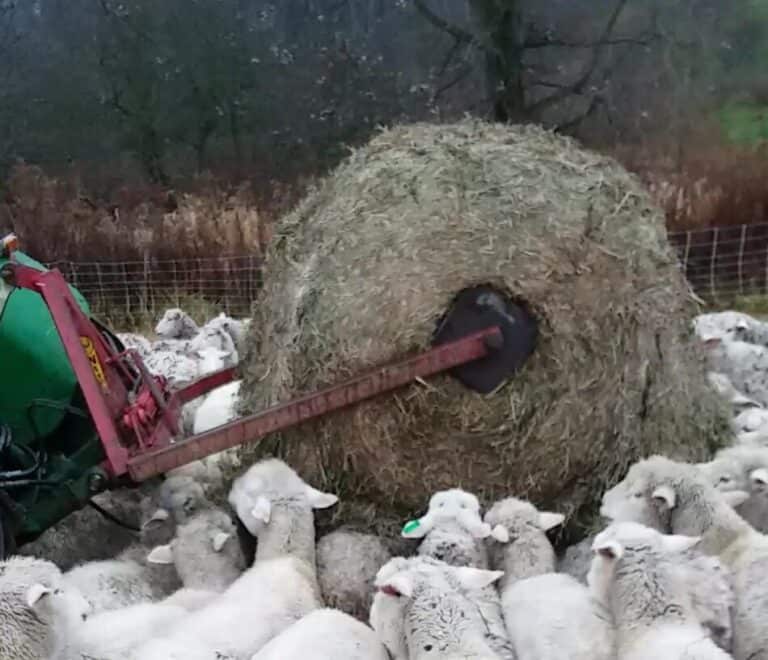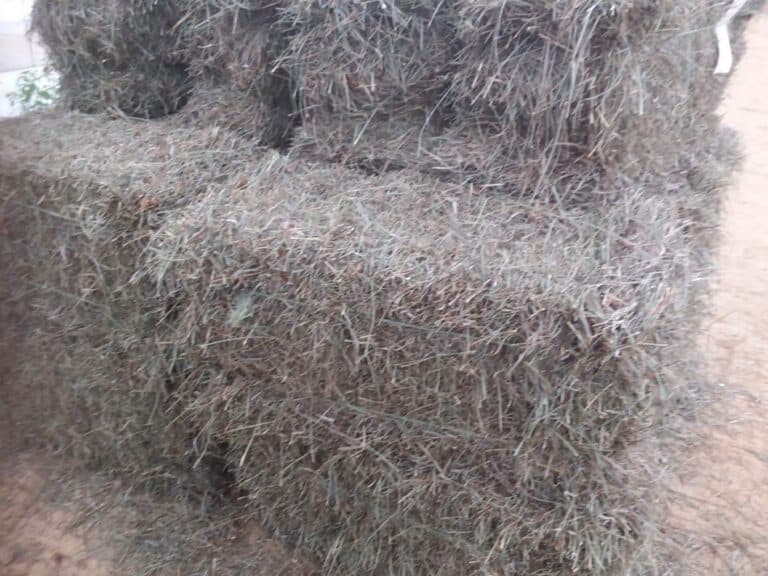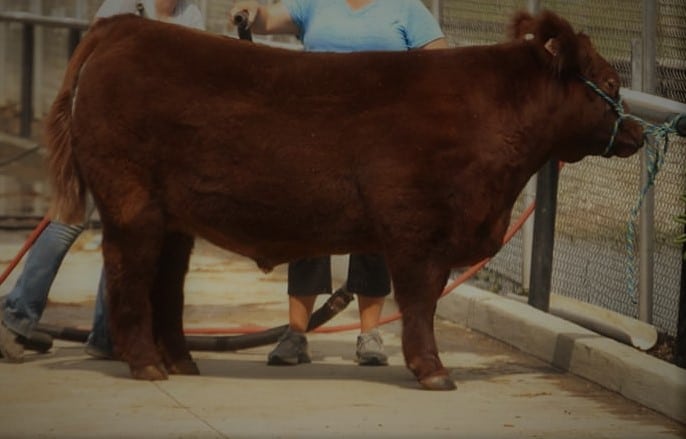Making Haylage: 6 Common Mistakes To Avoid

Making haylage is a great way to preserve high quality forage for your livestock. But, do it wrong and you’ll get a mess.
What are the things you need to watch out for so your haylage will be top quality?
Common mistakes with haylage are using thin or not enough plastic, baling at the wrong moisture and delaying wrapping.
Haylage can expand your forage options for your farm and your livestock, especially when making dry hay is difficult because of the climate you live in or just a wet year.
Haylage: What Is It? goes into more of the details regarding making of haylage.
Haylage makes good use of your forages, mainly since the stock will eat all of it, less picking through and dragging it out to be stepped on.
But there is a catch with haylage, it must be made correctly.
This article lists out the six most common failures in haylage making.
Steering clear of these mistakes will improve the quality of your feed and provide more nutrition to your stock.
Note: haylage in bale form is also called baleage. I have used the term haylage here but any article that refers to baleage will generally mean the same thing.
1. Using less than 6 wraps of plastic on the bales ruins haylage
I know it’s tempting to look at all of that plastic and say “maybe this could be done with less wraps”. Maybe, but maybe not, and that’s the issue.
In a perfect world the bales would not have to ever be moved and nothing would walk or drive by and nick or snag the edge of the bale.
But reality intrudes things happen and you still need to be able to count on the haylage being good feed.
The plastic layer keeps air out of the bale
The plastic on the outside of the bale is the only thing keeping out the air and stabilizing the environment inside the bale so the fermentation can occur then hold until you are ready to feed the haylage.
Fermentation is an anaerobic process, meaning with out oxygen. Keeping out the oxygen is mandatory to success of the finished haylage.
Multiple wraps keep bale secure
The multiple wraps of plastic are to make sure that the bale remains securely wrapped through all of the weather and wildlife, and maybe even domestic stock, that will be around the bale.
The extra wraps really are not extra, they are the amount of wraps needed to make a thin material, that is very pliable, tough enough to do the job.
Six wraps is a minimum with eight being recommended if the bales are going to be set aside and stored for 6-8 months before being used.
2. Neglecting to monitor wrap integrity ruins haylage
No matter how well you baled and wrapped the haylage that is just one aspect of haylage, the other is monitoring the bales.
What you are looking for is any tear or opening in the plastic wrapping that would let in air and cause spoilage instead of fermentation.
The bales need to be looked at every week or so to make sure to catch tears early and get them sealed back up.
We had a flock of crows peck holes in our bales!
Use an agricultural tape for this, it’s made to handle the weather.
3. Baling the forage at the wrong moisture level ruins haylage
While there is a range of moisture levels that are correct, meaning they will likely produce good fermentation and therefore good haylage, straying too far outside of these guidelines will cause trouble.
The right conditions produce good baleage
Fermentation is a natural process that just requires you to set up the right conditions and the bacteria in the bale will do the rest.
The key phrase there being right conditions, a big part of which is the correct moisture level.
So what? What will happen if the bale is too wet or too dry?
This is a natural process so won’t it still make haylage? Yes, but it will but not any haylage that you would want to feed your stock!
Dry haylage will be moldy, not fermented
Too dry will give a moldy, half done mess, very unappetizing for your stock and all your work is ruined.
Part of the bale will look like poorly done dry hay and part of the bale will look like a big bunch of mold, either way you wasted your time and forage.
Overly wet haylage will be sloppy and smell
Baled too wet still gives you a mess and wastes your time and forage but this mess is a bit different.
Haylage that is made too wet will be sloppy and stinky.
The fermentation bacteria need a specific environment in which to work, if you want the haylage to be great give your workers, the bacteria, a great place to work!
4. Not keeping the tube of bales tightly packed ruins haylage
As mentioned above, the biggest challenge with making haylage is keeping out air in order to create and maintain an idea environment for fermentation.
Eliminating the space between bales can be a problem for new forage producers.
Since the bales are set side by side in a tube wrapper, they must be pushed tightly together to keep the possible air space between bales small or hopefully not there at all.
If this is a huge concern for you or you have had trouble with sloppy tube wrapping, consider individually wrapping the bales.
This is more time consuming and takes more plastic, so it costs more on both fronts, but there is no possible problem with the group of bales being too far apart or not lining up since they don’t have to.
5. Waiting too long after baling to wrap the bales ruins haylage
This is the catch with haylage versus hay.
The bales must be wrapped to start the proper fermentation within 12 hours of being baled, ideally shoot for 4 hours.
That’s a pretty tight window, but it must be done. The whole process here depends upon this step being done in a timely manner.
Wrapping late promotes spoilage
Wrapping the bales late gives the wet hay too much time in an oxygen rich environment which will cause the wrapped hay to spoil rather than ferment like you want.
The reason for the spoilage is that you are not controlling the air, remember the haylage needs to ferment in an air free environment.
The bacteria that you are counting on to make the great haylage can not grow in an aerobic environment (where there is air/oxygen).
Bacteria that like the environment you have created will grow instead and those are the ones that will spoil the hay.
Bale Wrapping: How Late Is Too Late? is a progressiveforage.com article showing that wrapping within 24 hours is acceptable, read the link for details.
6. Making loose, fluffy bales can ruin haylage
This is another air thing, loosely baled haylage will not ferment correctly.
The forages that are to be fermented need to be tightly packed together in order to create the environment that your bacteria need.
Bacteria are always present and will always proliferate, but you need to guide the process to favor the bacteria you want for fermentation, not the bacteria that will cause spoilage.
Drive slowly while baling to pack bales
How do you keep your bales tight when you are baling? Drive slower across the field.
A nice evenly packed bale will perform well as haylage, a lopsided sloppy bale will be difficult to work with and is not as likely to ferment well.
Not to mention, there is more haylage packed into a heavy bale than a light one, so you would be using your space and money, in plastic, more efficiently with dense bales.
Well made haylage is doable
To sum it all up, have the bales tightly made, at the right moisture level and wrap them right away.
Then just keep an eye on them by making periodic checks to make sure the wrap is still intact.
Haylage is a simple process that done correctly will give you and your stock great stored feed.
Resources: Make Baleage Not Failage, by Mike Rankin, Hay and Forage Grower.com






